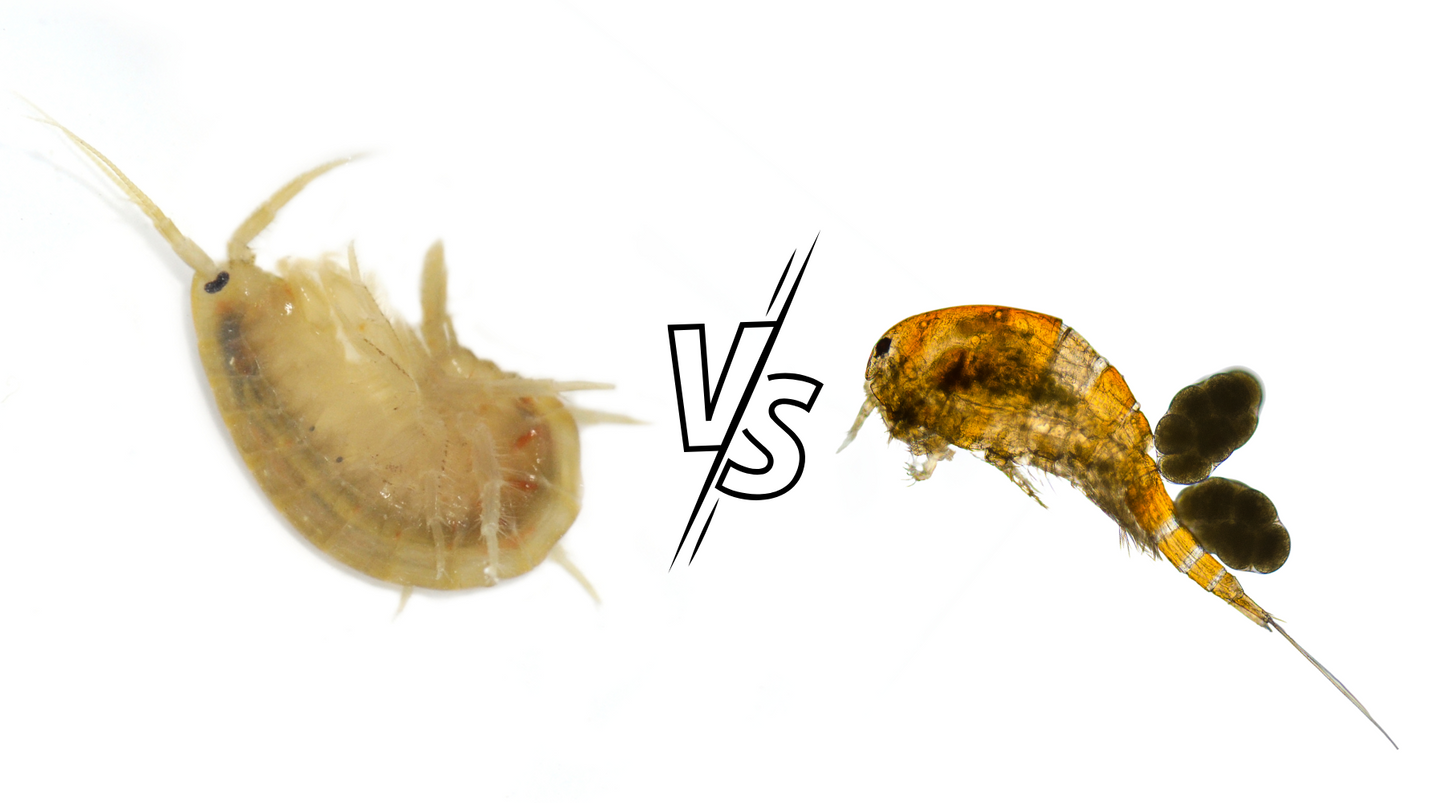BFCM 30% OFF ALL LIVE FEEDS
Every live feed is 30% off—Tisbe, Apocyclops, Rotifers, Phyto, and more. Limited-time BFCM deal!

Copepods and amphipods are both small, aquatic crustaceans that belong to the subphylum Crustacea. Despite their similar size and habitat, these two groups of animals have some important differences.
First, copepods and amphipods differ in their overall appearance and body structure. Copepods are typically oval or cylindrical in shape, with a single pair of antennae and five pairs of legs. In contrast, amphipods have a more elongated and shrimp-like body shape, with two pairs of antennae and seven pairs of legs.
Another key difference between copepods and amphipods is their feeding habits. Copepods are primarily herbivores, feeding on algae and other plant material. Amphipods, on the other hand, are omnivorous, feeding on a wide variety of plants and animals. This difference in diet is reflected in the different digestive systems of the two groups. Copepods have simple digestive systems with a single stomach, while amphipods have more complex digestive systems with multiple stomachs.
In terms of reproduction, copepods and amphipods also show some differences. Copepods are known for their high reproductive rates, with some species able to produce hundreds of offspring in a single breeding season. Amphipods, on the other hand, have lower reproductive rates and typically produce fewer offspring.
One of the most significant differences between copepods and amphipods is their role in the ecosystem. Copepods are a vital component of marine and freshwater food webs, serving as a primary food source for many larger aquatic animals. In contrast, amphipods are often considered to be scavengers, feeding on dead plants and animals.
Overall, while copepods and amphipods may look similar and live in the same aquatic environments, they have distinct differences in their appearance, feeding habits, reproductive rates, and ecological roles. Understanding these differences is important for studying the diversity and dynamics of aquatic ecosystems.